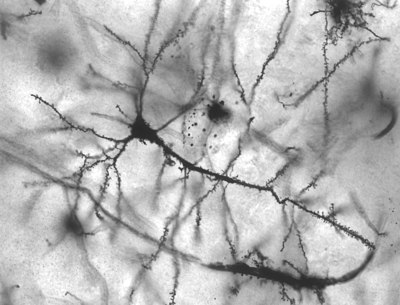Topobiology

Welcome to the Wikiversity learning project about topobiology. The concept of topobiology was developed by Gerald Edelman as a theoretical basis for morphogenesis. This project provides learning resources that help Wikiversity participants explore topobiology.
Project format
[edit | edit source]Initially, the focus of this project is discussion of published biomedical research articles related to the topic of topobiology.
Introduction to topobiology
[edit | edit source]
Each human begins as a single cell. After a few days, the early embryo has two types of cells, one specialized to interact with maternal uterine cells, the other is a bundle of stem cells that will eventually divide and give rise to hundreds of specialized cell types that are found in a new born baby. Topobiology is a theory for explaining how a single cell can give rise to a complex multi-cellular organism. Topobiology is particularly concerned with how nearby cells take stock of their local environment and adjust their patterns of gene expression to match their position in the developing embryo. Topobiology is thus concerned with cell surface proteins that allow cells to sense their surroundings and transmit control signals to the nucleus. In some cases, cells respond to these signals by radically changing their "lifestyle" and migrating to new locations in the embryo.
Edelman's book "Topobiology" was part of a trilogy that sought to provide a theory for how cellular and molecular processes can give rise to human consciousness. The theory of topobiology thus includes a concern for how the axons of neurons migrate to make contact with their target cells. How does a linear program of gene sequences "unfold" into the complex topology of a three dimensional neural network that can generate human conscious experience?

While there are many hundreds of proteins involved in generating the topobiological complexity of the human body and brain, there are a relatively small number of types of these proteins. In the following sections, specific examples of the key protein types are described in the context of key topobiological processes. Once these examples are explored and understood, the theory of topobiology can be used to make sense of the grand sweep of embryogenesis and as a foundation for understanding the biological basis of learning, memory and consciousness.
Cell adhesion
[edit | edit source]One of Edelman's research interests was cell adhesion, a major part of the theory of topobiology involved cell adhesion.
Two cell adhesion proteins are E-cadherin and N-Cadherin. During embryonic development it is not unusual for cells to stop making E-cadherin and start making N-cadherin. The molecular mechanisms by which this switch takes place is still under investigation. A basic part of the theory of topobiology is that there are feedback loops that connect transcription factors to cellular processes that regulate cell adhesion molecules while at the same time cell adhesion molecules can act to regulate the expression of transcription factiors. The N-Myc Down Regulated Gene1 (NDRG1) Is a Rab4a Effector Involved in Vesicular Recycling of E-Cadherin
Phosphorylation
[edit | edit source]A frequently used mechanism for regulating both cell adhesion proteins and transcription factors is phosphorylation. E-Cadherin Adhesion Activates c-Src Signaling at Cell–Cell Contacts
Another important regulatory mechanism....MDM2 Promotes Cell Motility and Invasiveness by Regulating E-Cadherin Degradation
Axon targeting
[edit | edit source]An isoform-specific allele of Drosophila N-cadherin disrupts a late step of R7 targeting
Epidermal appendages
[edit | edit source]Scales, feathers or hair are produced by specialized groups of cells at the surface of some animals. What signals specify where these epidermal appendages are located and what form they take?
Feathers
[edit | edit source]A fundamental problem in morphogenesis is symmetry breaking. Bird feathers provide a well-studied experimental system for study how symmetrical structures can be converted into asymmetric structures.
